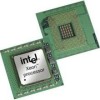Intel BX80605X3430 Data Sheet - Page 41
Package C-States
 |
UPC - 735858210331
View all Intel BX80605X3430 manuals
Add to My Manuals
Save this manual to your list of manuals |
Page 41 highlights
Power Management 4.2.5 Package C-States The processor supports C0, C1/C1E, C3, and C6 power states. The following is a summary of the general rules for package C-state entry. These apply to all package Cstates unless specified otherwise: • A package C-state request is determined by the lowest numerical core C-state amongst all cores. • A package C-state is automatically resolved by the processor depending on the core idle power states and the status of the platform components. - Each core can be at a lower idle power state than the package if the platform does not grant the processor permission to enter a requested package C-state. - The platform may allow additional power savings to be realized in the processor. The processor will put the DRAM into self-refresh in the package C3 and C6 states. • For package C-states, the processor is not required to enter C0 before entering any other C-state. The processor exits a package C-state when a break event is detected. If DRAM was allowed to go into self-refresh in package C3 or C6 state, it will be taken out of selfrefresh. Depending on the type of break event, the processor does the following: • If a core break event is received, the target core is activated and the break event message is forwarded to the target core. - If the break event is not masked, the target core enters the core C0 state and the processor enters package C0. - If the break event is masked, the processor attempts to re-enter its previous package state. • If the break event was due to a memory access or snoop request. - But the platform did not request to keep the processor in a higher package Cstate, the package returns to its previous C-state. - And the platform requests a higher power C-state, the memory access or snoop request is serviced and the package remains in the higher power C-state. Table 4-5 shows an example package C-state resolution for a dual-core processor. Figure 4-3 summarizes package C-state transitions. Table 4-5. Coordination of Core Power States at the Package Level Package C-State C0 C0 C0 C11 C0 Core 0 C3 C0 C6 C0 Core 1 C11 C3 C6 C0 C0 C0 C11 C11 C11 C11 C3 C3 C11 C3 C6 Note: 1. If enabled, the package C-state will be C1E if all actives cores have resolved a core C1 state or higher. Datasheet, Volume 1 41















